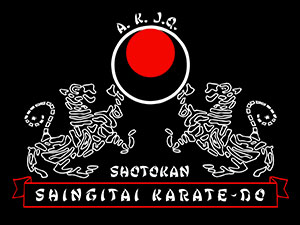Heian Shodan Groupe 1.1
Premier kata et dossier embusen (le kata pas à pas) - 21 mouvements - Environ 35 secondes - Groupe 1
Heian Shodan comporte 21 mouvements. Maître Itosu s’est inspiré du kata Kanku dai pour la création des katas Heian comme Heian Shodan. Point important pour la pratique des katas :
- Garder les pieds bien à plat au sol.
- Regarder devant soi.
- Écarter sa base et descendre son centre de gravité.
- Garder le dos droit
- Pour les pivots, tournez sur les talons pour ne pas se blesser au genou!
- Respirer !
- Suivre le compte de l’instructeur.
Le kata Heian Shodan débute vers la gauche. Le regard se dirige d’abord dans cette direction, suivi par le mouvement des hanches.
Mais pourquoi commencer par la gauche ?
Autrefois, l’épée ou le sabre était porté sur le côté gauche du corps. Lorsqu’une attaque survenait de ce côté, il était plus difficile de dégainer et d’utiliser l’arme pour se défendre, offrant ainsi une opportunité à l’attaquant. De plus, la majorité des pratiquants étant droitiers, le côté gauche est naturellement plus vulnérable.
Ainsi, ce choix stratégique dans l’exécution du kata reflète des considérations historiques et pragmatiques des arts martiaux.
Tradition et héritage : Les katas de karaté sont profondément enracinés dans les anciennes pratiques martiales et transmettent, à travers leurs mouvements, un savoir issu des générations passées
Heian Shodan has 21 movements. Master Itosu was inspired by the Kanku Dai kata for the creation of the Heian katas, including Heian Shodan.
Important points for the practice of katas:
- Keep your feet flat on the ground.
- Look ahead.
- Spread your stance and lower your center of gravity.
- Keep your back straight.
- For pivots, turn on your heels so you don't hurt your knee!
- Breathe!
Follow the instructor's count.
The Heian Shodan kata begins to the left. The gaze is first directed in that direction, followed by the movement of the hips.
But why start to the left?
Historically, the sword was worn on the left side of the body. When attacked from this side, it was more difficult to draw and use the weapon for defense, creating an advantage for the attacker. Furthermore, since most practitioners are right-handed, the left side is naturally more vulnerable.
Thus, this strategic choice in the execution of the kata reflects both historical and practical considerations in martial arts.
Tradition and heritage
Karate katas are deeply rooted in ancient martial practices and serve as a means of passing down knowledge from past generations through their movements.
